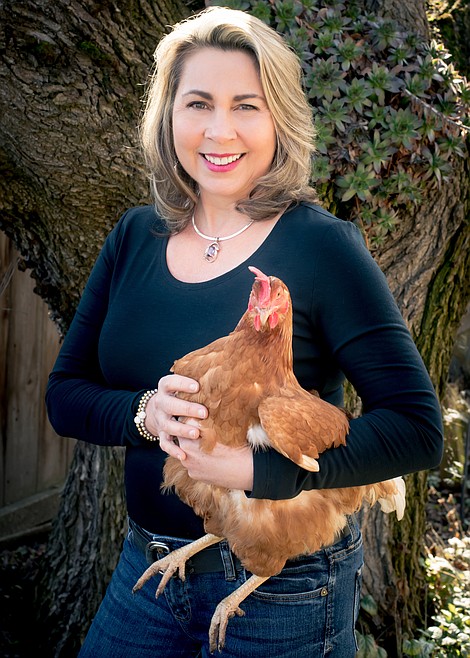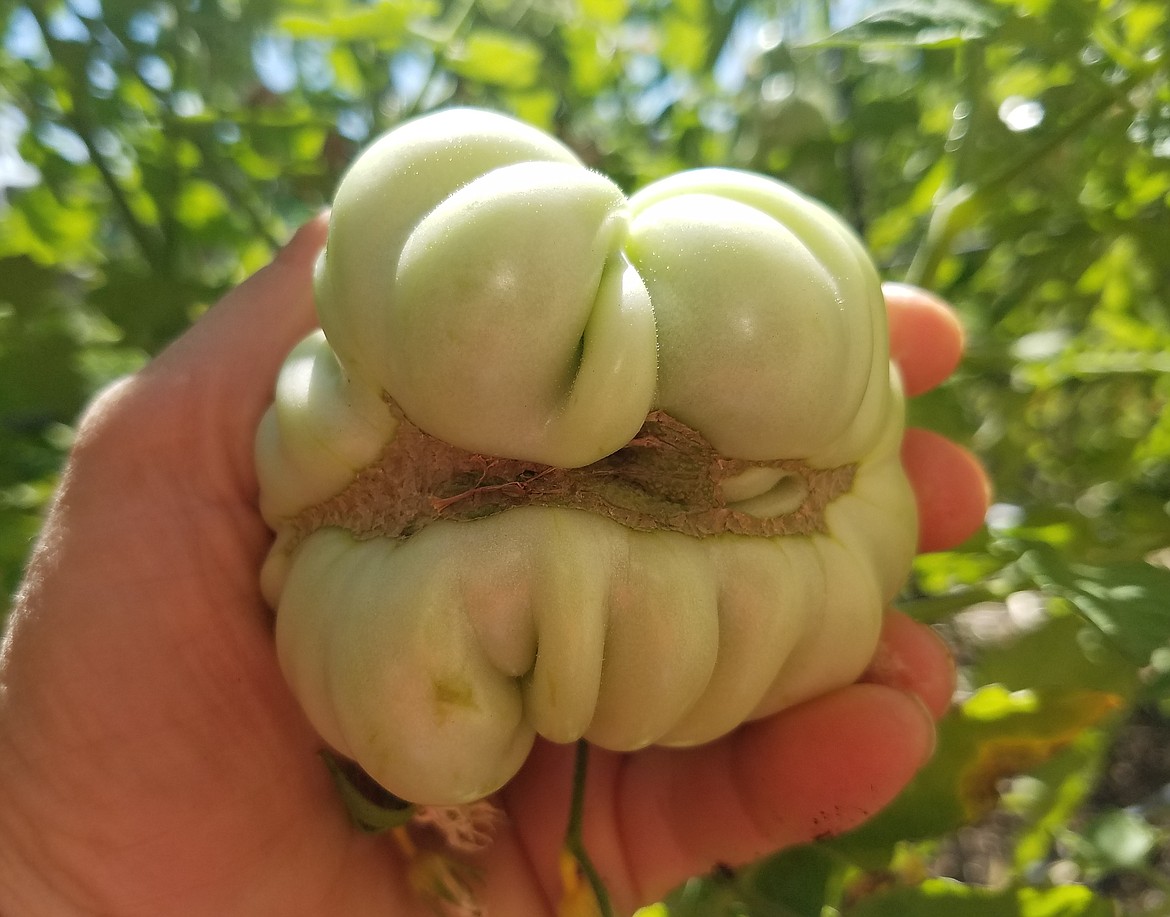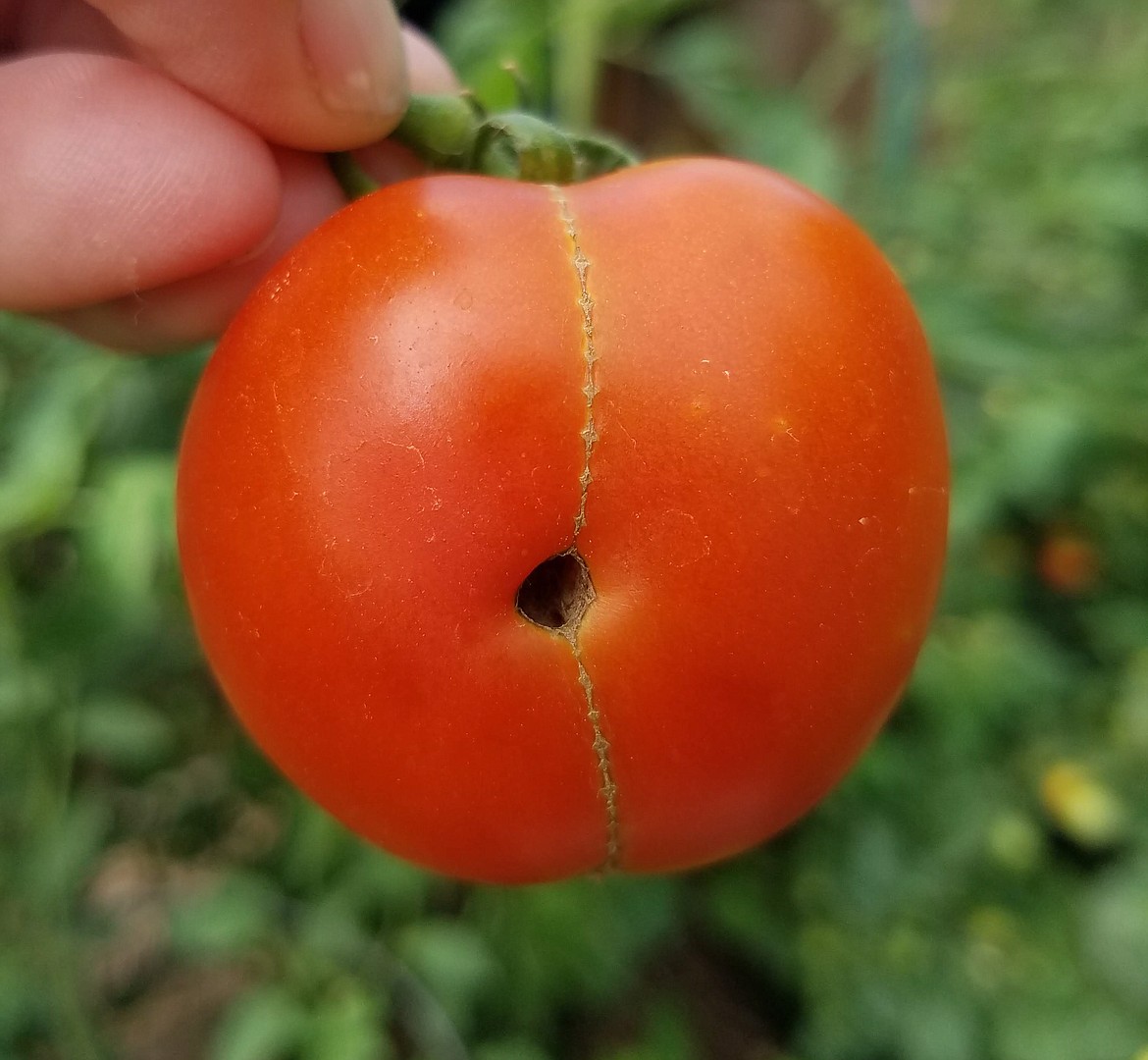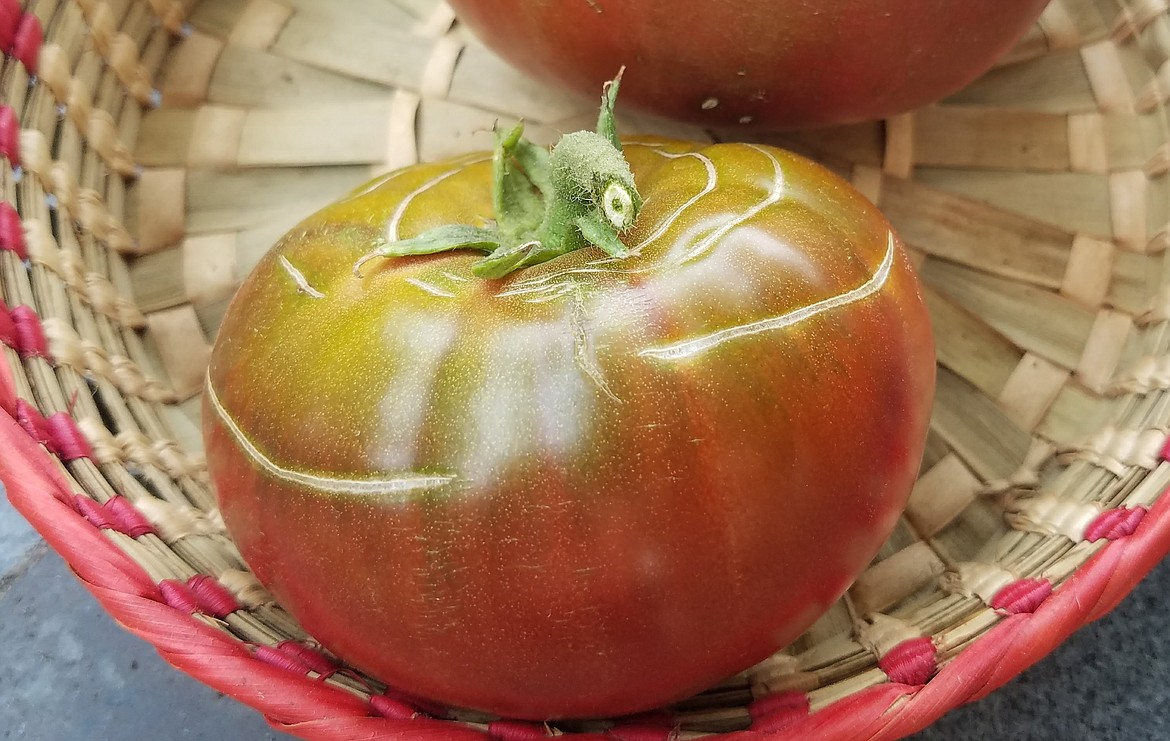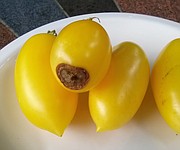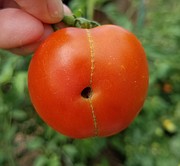GROWING IN NORTH IDAHO: What the heck's wrong with my tomatoes?
The summer’s tomato crop is starting to ripen and those juicy orbs of deliciousness are making their way to the table.
When harvesting, you may discover a few of the abnormalities listed below. But don’t panic — even though these conditions are unsightly and disappointing, they pose no major threat to your tomato plants or fruit.
Blossom End Rot (BER) is the most common tomato problem we diagnose at the Plant Clinic. You’ll recognize it by the brownish-black leathery spot on the blossom end of the tomato.
It’s a physiological disorder that occurs in developing fruit due to a lack of calcium. The primary cause is fluctuations in soil moisture — especially when rapidly growing plants are exposed to a period of drought and high heat (yep, that’s our summer!). It can also be triggered by excessive rains/watering, excessive soil salts from over-fertilization or improper soil pH.
It is important to note that BER has nothing to do with the amount of available calcium in the soil. It is related to the plant’s ability to take up calcium from the soil. Calcium isn’t a very mobile element within the plant’s cellular structure and even slight changes in the water supply can trigger BER.
Our soils generally contain all the calcium needed to grow healthy plants. Adding calcium amendments, eggshells, or using a foliar calcium spray won’t prevent BER if you’re not watering consistently.
Container-grown plants tend to exhibit BER more often (inconsistent watering, excessive fertilizing), as do many paste-type tomato varieties. The good news is that the fruit is edible; just cut off the rotted end.
To avoid BER, water regularly and deeply throughout the growing season, mulch to conserve soil moisture, or grow varieties that are less susceptible (like cherry varieties).
Have you ever seen a tomato with a sunken and deeply creased, brown, cork-like deformity on its blossom end? This is known as Cat-facing, another physiological condition. It’s commonly found on large heirloom varieties that have set fruit early in the growing season. Cool or unstable weather conditions affect the pollination process, which leads to abnormal development and scarring.
While they are ugly, you can eat them — just cut away the hard corking. Planting when weather conditions are warmer can help reduce cat-facing.
Another oddity is zippering — expressed as seam-like scars on the fruit. Once again, the phenomenon is physiological, caused by low temperatures during pollination. In this case, the anther of the tomato blossom becomes stuck to the forming fruit and creates a zipper-like scar from the blossom end to the stem. Sometimes the fruit will exhibit a closed hole or dimple.
Fruit cracking … Argh! It’s so frustrating to find your prize beefsteak split open on the vine! Tomatoes will crack, split, or burst when the internal growth of the fruit happens faster than that of the skin.
It’s common to see cracking early in the season, especially on large-fruited heirloom varieties (unfortunately, many heirloom varieties are genetically predisposed to cracking). These blemishes will heal over without causing problems to the fruit (other than cosmetic — there goes the blue ribbon!).
Over-watering or excessive rains at the time of ripening can cause any tomato to crack. Open splits at this stage can lead to disease, fruit rot, and become an attractant for flies and yellowjackets.
To prevent cracking, mulch to maintain soil moisture, reduce watering as fruit begins to ripen, pick ripening fruit ahead of heavy rainfall, or grow crack-resistant varieties.
With our hot, dry summer you will no doubt see a few of these conditions on your tomatoes. Take what preventative measures you can, but know your tomatoes will survive and will still taste like summer on the vine!
The University of Idaho Extension, Kootenai County Idaho Master Gardener program is located in the UI Research Park, 721 S. Lochsa St. in Post Falls. Visit us in person, on Facebook, or our webpage https://www.uidaho.edu/extension/county/kootenai/garden. Email kootenaimg@uidaho.edu, or call 208-292-2525. IMG services are free to the public.
• • •
Candace Godwin is a Certified Idaho Master Gardener.

